Goldbug Software
Second Contacts2
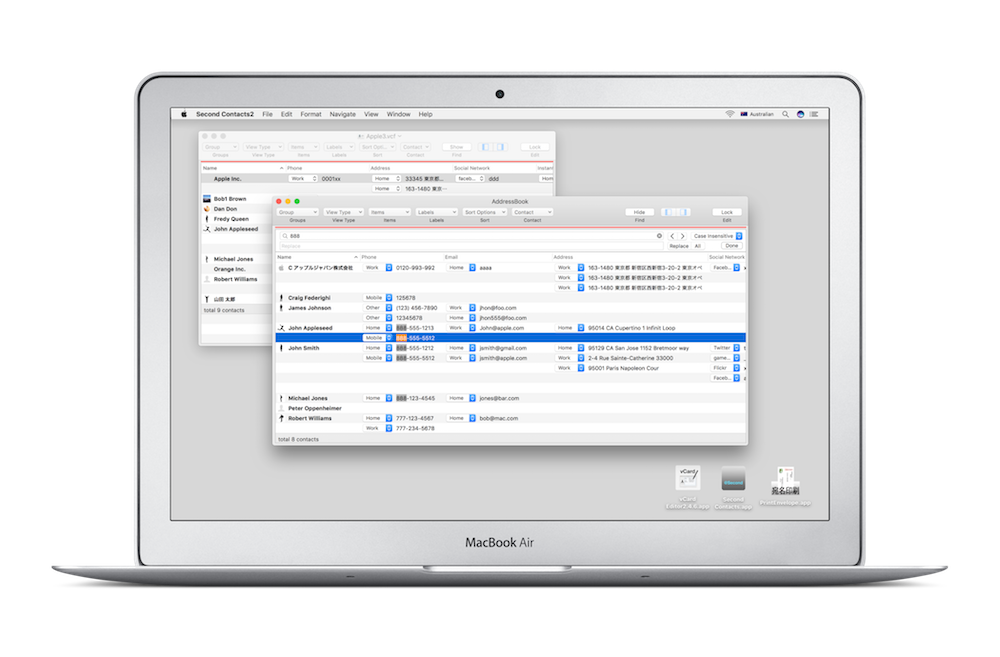
What's News
Jul 19, 2025 Second Contacts2 3.5.7 is released.
- Stability improvements and bug fixes.
Jul 11, 2024
- There is an issue that prevents you from deleting contacts from a group. The cause is under investigation.
Feb 14, 2021 What is the difference between Second Contacts2 and Second Contacts
Jul 16, 2021 Bulk change function of Second Contacts2.
Nov 29, 2018 Find duplicate contacts by sort function.
Activities
Additional Info
Second Contacts2 for Mac
Second Contacts2 is an application that allows you to directly edit the address book created by Apple Contacts and edit exported vCard files.
This application shows the address book and vCard in each window in a table format, and you can edit them by dragging and dropping them to each other.
In addition, each window lists multiple contacts in a table style, and has various functions such as setting labels and values for each item, sorting for each item, and searching and replacing. You can also change specific fields for multiple contacts at once.
A vCard is a file with a vcf extension, and not only Apple's Contacts app, but various contact applications have functions to export and import vCards, and to exchange contact information between apps. will be used.
With this app, you can edit the contact information exported to the vCard file from the Apple Contacts app, restore it to the Apple Contacts app, or use it as a backup. You can also use the vCard file as a second address book using this application.
And this application doesn't communicate with outside servers using the Internet except for iCloud Server. The Contacts data is only used inside of the app and never be sent to any servers.
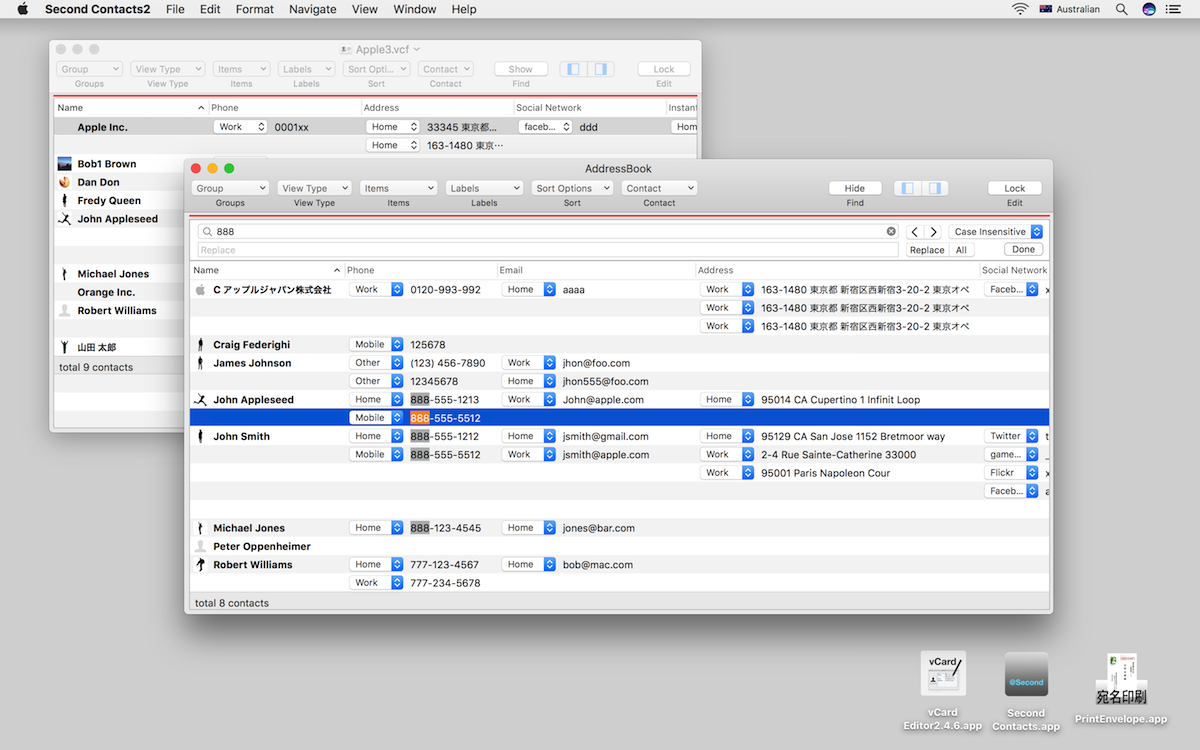
Allowing Second Contacts2 to access your contacts
Your contacts are protected in your system.
When Second Contacts2 is launched at first time, an alert for enabling access to your contact will be shown.
Please allow Second Contacts2 to access your contacts, otherwise Second Contacts2 doesn't work.
Second Contacts2 for Mac
- Read/Write contacts in your Mac
- Open vCard or CSV
- Import from vCard
- Export to vCard or CSV
- Column sort
- Find&Replace
- Comparing arbitral two contacts and editing
- An action in the context menu of the table cell and substitution
- Detachable Contact Info
- Input Address
- Bulk edit function of value in the selected multiple cells
- Showing QRCode with various formats
- Register Custom Items
- Adding Custom Label
Read/Write contacts in your Mac
Second Contacts2 shows contacts in the table such like a spread sheet.
You can select a type of the value of each column such as Phone, Email, Address by the View Type and Columns menu.

You can select the View Type by the menu as below. When you select "Address", the Name and Address columns are shown. The itmes menu can be used to add columns to see other values.
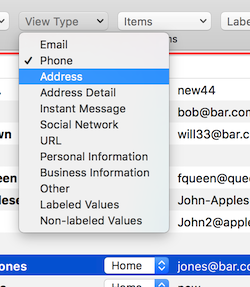
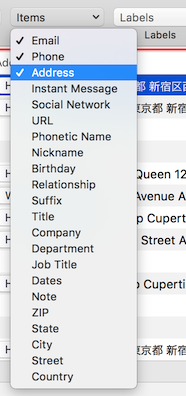
If the value has a label, it is shown together with the value, and you can change both label and value at the cell during editing.
To edit the value, you need to click the edit button.
Then the red line is shown under the Toolbar to show it is editing mode.
And you need to double-click the cell to change the value too.


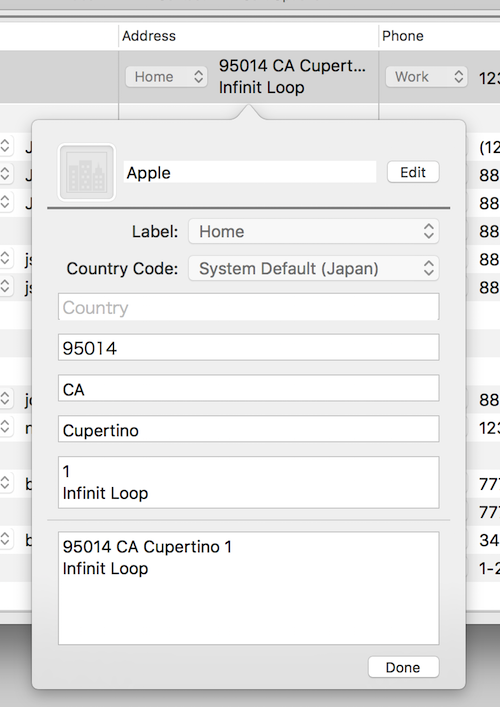
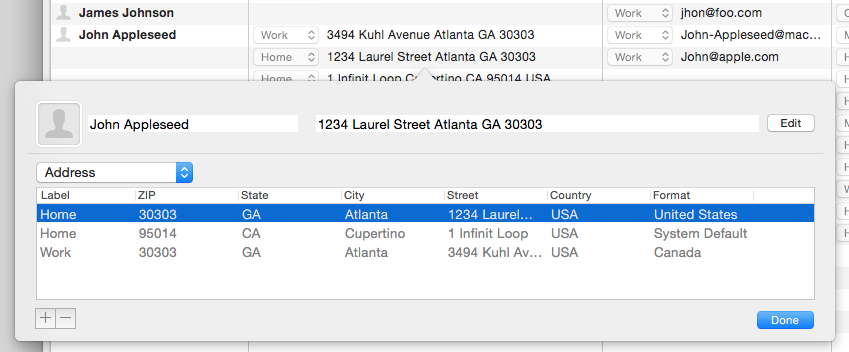
Editing Contacts
When you double-click the cell in the Address and Instant Message columns, the above panel is shown to change the labels and values.
Also such panel will be shown when you double-click the cell with holding the command key. You can add/delete the labeled value through the panel.
When you double-click the address cell, the address panel above left will be shown, and you can edit the items of the address.
When you double-click the Address cell with holding the command key, the another address panel above right will list the addresses in the contact.
You can add a address with a label or delete the address.
Open vCard or CSV
Second Contacts2 can read/write a vCard file and can read CSV file.
To read a vCard file or CSV file, select the file in the file dialog by selecting the open menu in the file menu. When you selct the vCard/CSV file in the dialog, a new window will open to show contacts in the file. You can edit the contacts as same as the contacts in your Mac. Also you can drag&drop the contacts to other window of Second Contacts. However you can save the CSV file. The only way is drag&drop the contacts to other window or export them to other vCard/CSF file.

The detail is here.
Import from vCard
Second Contacts2 can import a vCard for inserting the contacts to the vCard you are opening.
When you select the "Import from vCard" menu in the file menu. The open file dialog will open.
After selecting a file in the dialog, another panel will open and show the contacts in the file.
Select contacts in the panel and click the "Select" button, then the contacts will be added to the AddressBook or vCard you are opening.
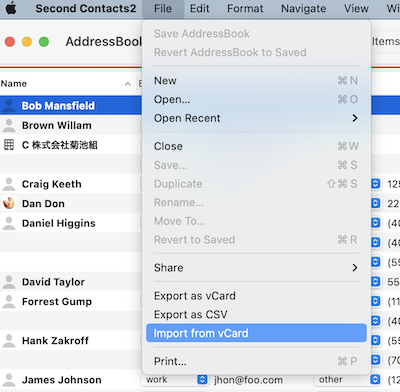

Export to vCard and CSV
Second Contacts2 can export selected contacts to a vCard file or a CSV file.
To export contacts to a vCard file or CSV file, select contacts in the AddressBook or vCard window, then select the "Export as vCard" or the "Export as CSV" menu int the file menu. The Save dialog will open to set the filename.
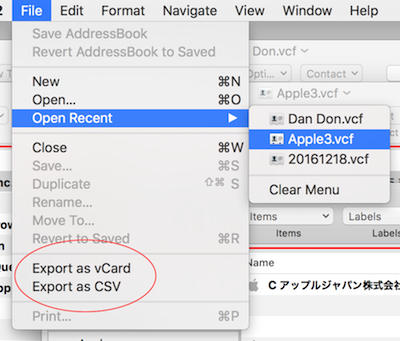
The tips of exporting CSV is here.
Column Sort
Each column in the table has a sort button. It will help you finding a duplicate value.
The Sort Options menu in the Toolbar is for changing the sort method.
You can switch the way of sort to State or ZIP when you click the button in the header of Address Column.
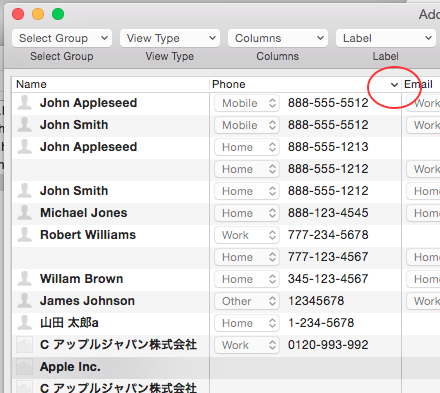
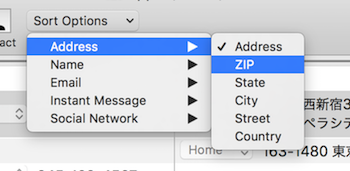
Find&Replace
The FindBar is shown when you click the Find button or select the "Find..." menu in the Edit menu.
When you type a word in the search field, the matched words are highlighted in gray background.
The word in orange background is the replacement target.
It shows the word will be replaced when you click the replace button.
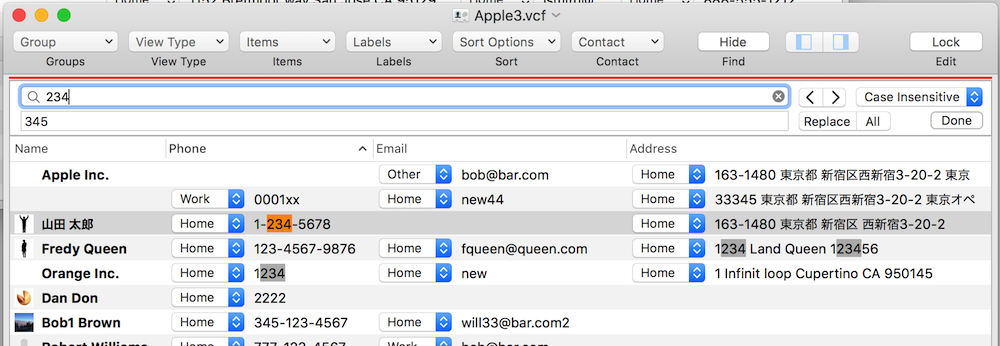
Please note that the string in the address cell consists of several sub items and the item is used to "find" a string. For example when the address is "Cupertino, CA" and State and City are "CA" and "Cupertino". You can not find "Cupertino, CA", but you can find "CA" or "Cupertino" respectively. This is a restriction of implementing the replace function.
The Find Panel will be shown when you select the "Show Find Panel" menu in the edit menu or type Cmd+Shift+F as a short cut.
This panel shows the search results with selected items and labels, and can replace the string with other string.
The detail is here.
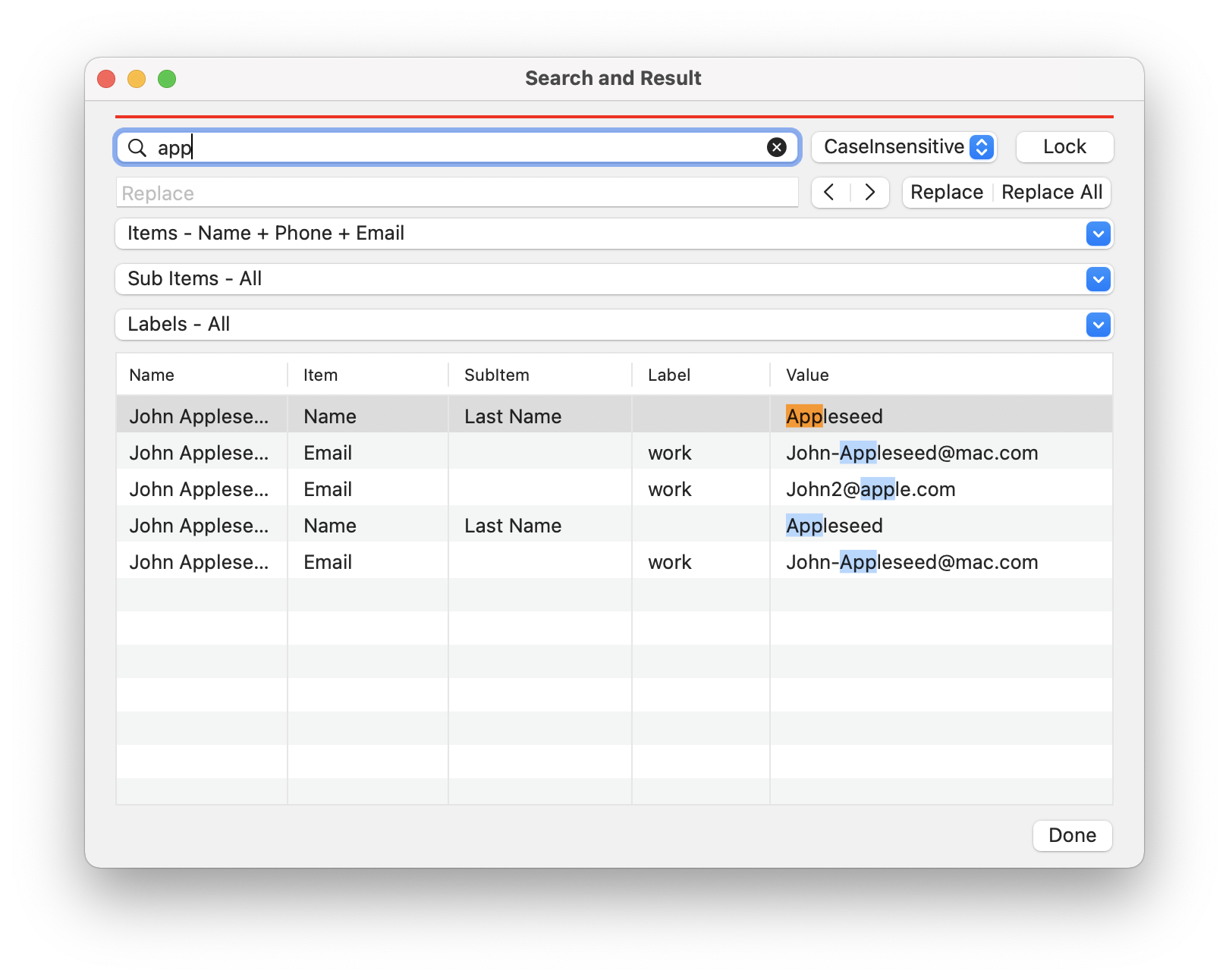
Comparing arbitral two contacts and editing
The compare panel is for comparing arbitral two contacts in the vertical table.
It is shown when you select the "Compare two contacts" in the Format menu with selecting arbitral two contacts.
In the edit mode, you can change the value and move/copy between contacts by drag&drop.
In order to copy the value, dragging value with holding option key.
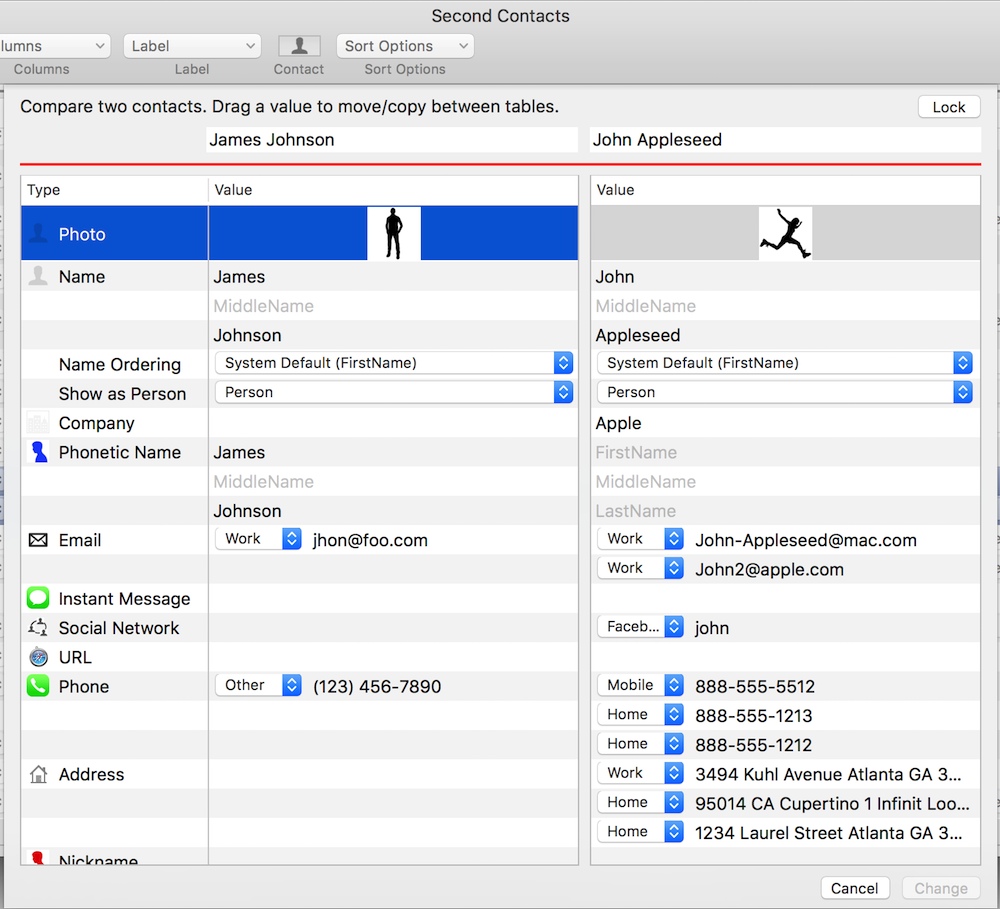
Detachable Contact Info
When the cell in the Name column is dobule-clicked, the Contact Info panel is shown as popover. It shows whole items in the selected contact vertically. The popover is closed automatically when you click the outside of it. However when you drag the outer edge of the popoover, it turns to the normal panel. So it will stay in the desktop until you close it. And you can open the other Contact Info popover and even open the multiple Contact Info panels at the same time. This will bring you the other way of comparing and editing contacts. Also you can copy any items by drag and drop between the Contact Info panels or the main window.
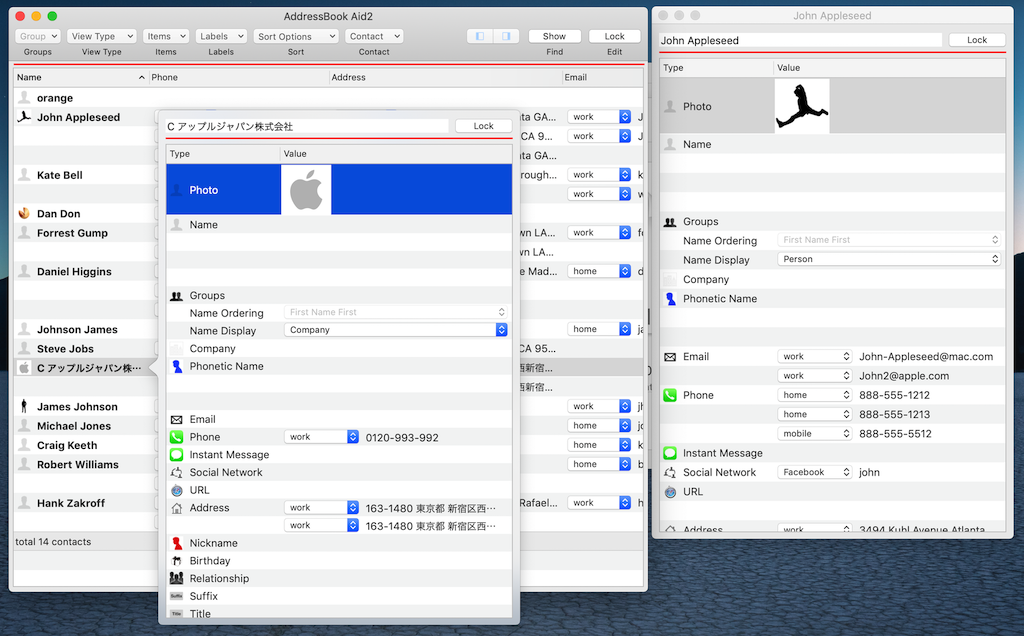
An action in the context menu of the table cell and substitution
When you control-click the cell, the context menu will be shown as below. Some cells have a action such as opening a mail message or a map. The action depends on the type of the cell.
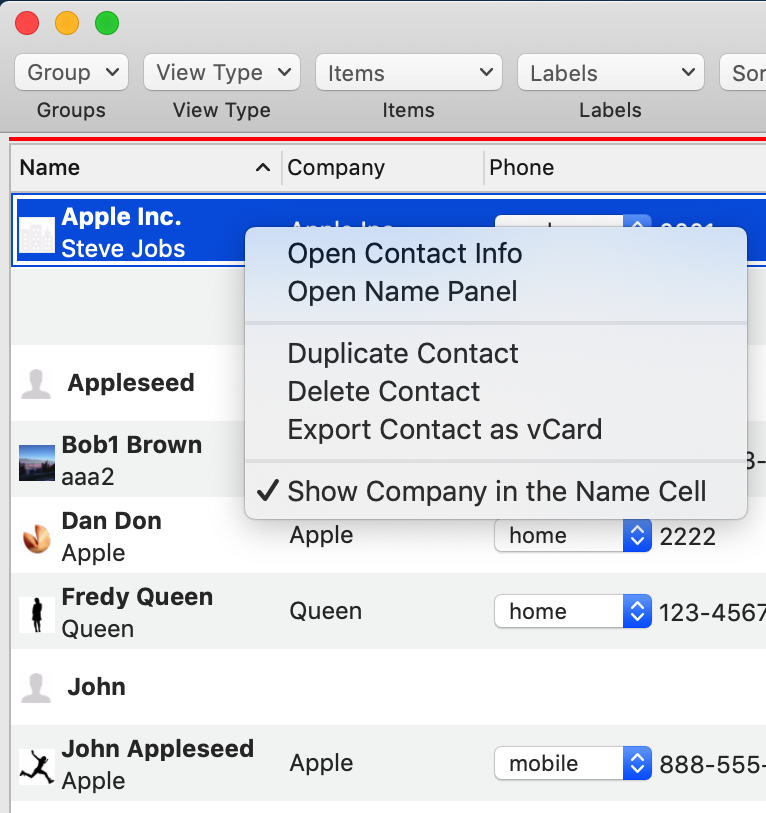
|

|
In the edit mode, some edit menus in the context menu will be enabled such as inserting a value or replacing the value in the selected cells. If multiple cells are selected, the operation works for the selected cells.
Input Address
When you double-click the address cell, the address list panel will open. The plus button in the lower-left corner is for adding a new address value.
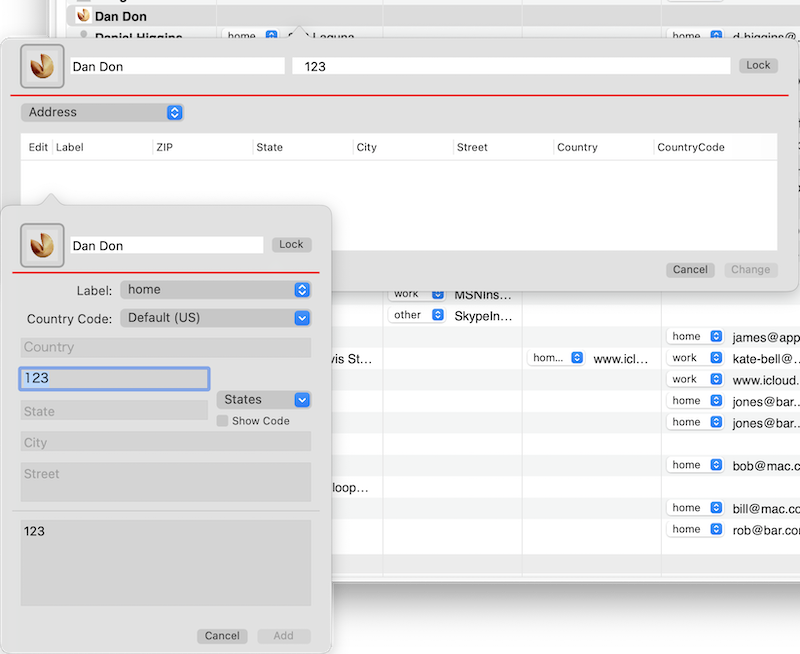
Selecting the Country Code menu enables State pulldown in some countries. You can enter the State name in the State Field by selecting State pulldown.
You can add State pulldown to any country by placing the AddressFormat.json file under the vCard Editor folder in iCloud Drive.
Here is the sample of AddressFormat.json.
Bulk edit function of data in the selected multiple cells
You can set the same label or value in the selected cells at once.
Select multiple rows, then showing the context menu by control-click or right click, and change the label or value via the context menu. An alert will be shown for making sure the operation. When you select OK, the values of selected cells in the same column will be changed what you enter.
Please note that the operation can be undo by the "Undo" menu in the Edit menu.
The detail is here.
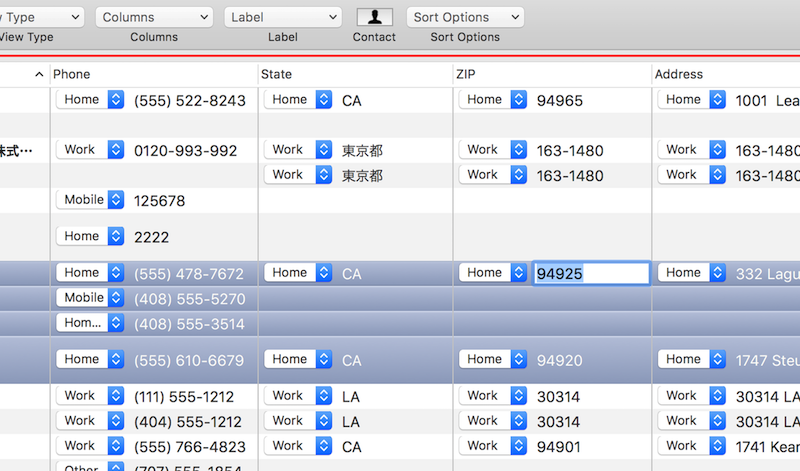
Showing QRCode with various formats
Second Contacts2 can show QRCode of the selected contact with various formats, and you can Copy&Paste the image to other documents.

Register Custom Items
You can register arbitrary information (custom items) in the contact information. You can show the information in the contact row with the name and label of your choice.
Please see here in detail.
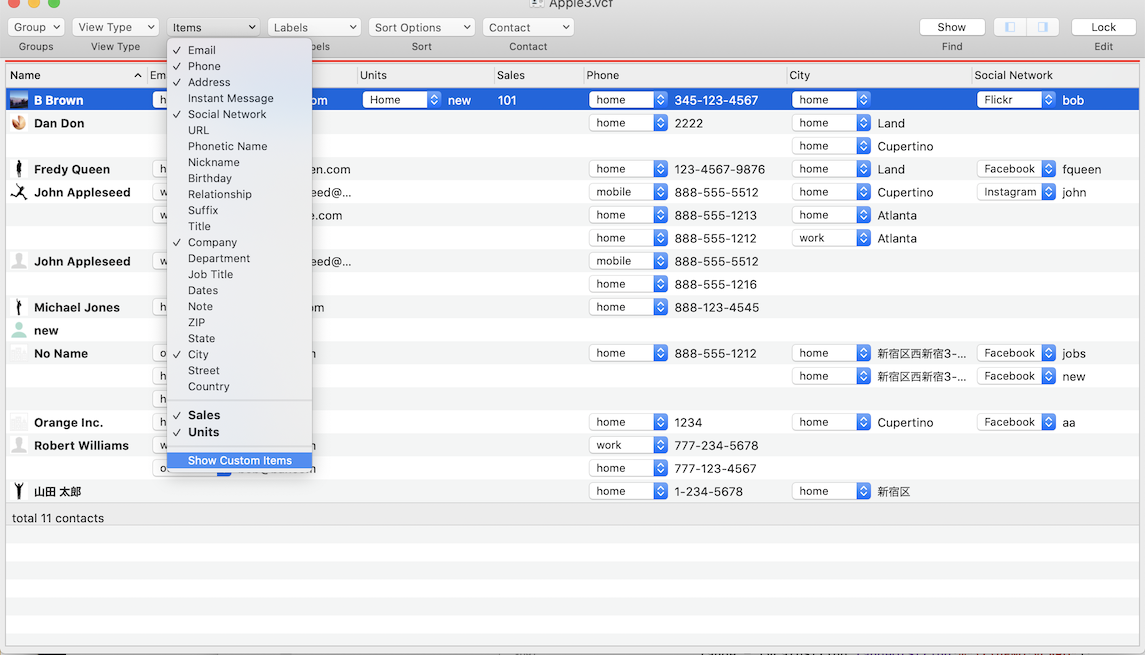
Adding Custom Label
Selecting the "Custom label" in the Navigator menu, the "Custom Label Panel" will open. It is for adding and changin a custom label for each item such as Email, Phone, Address.
Click the plus button is for adding a new label, and click the minus butotn is for deleting the selected label. And dobule-click the label in the table is for changing the label.
And the changing refrects to the AddressBook, can't be undone.
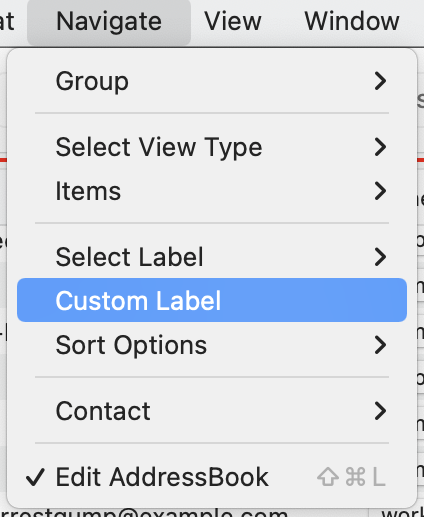
|
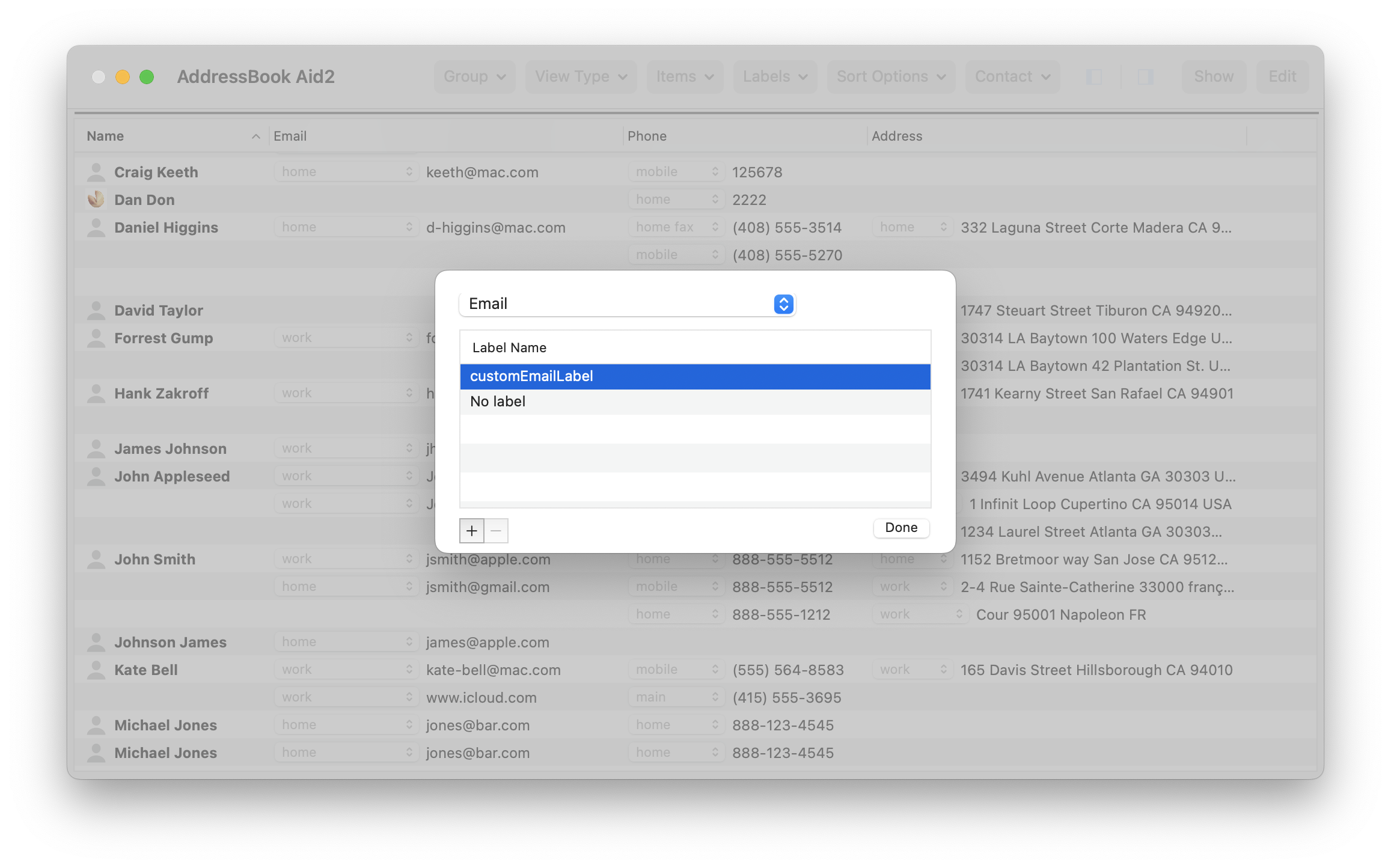
|
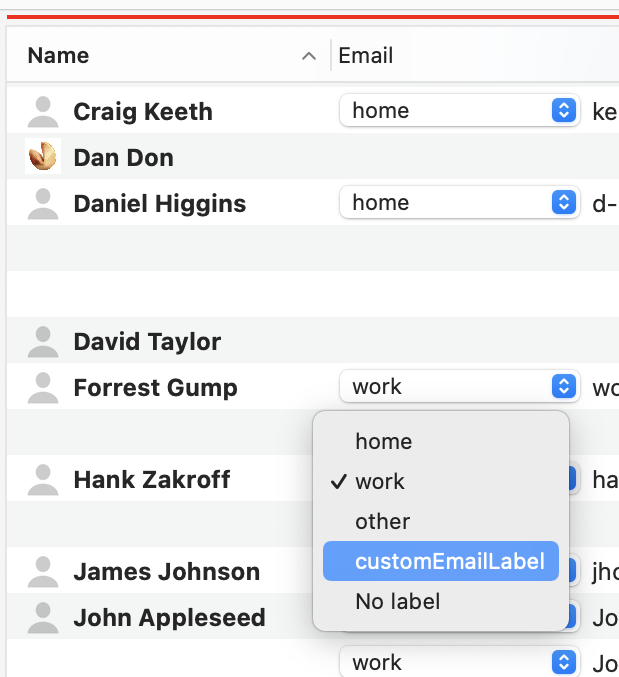
Dynamic Text
You can change font and size in the row of Table.
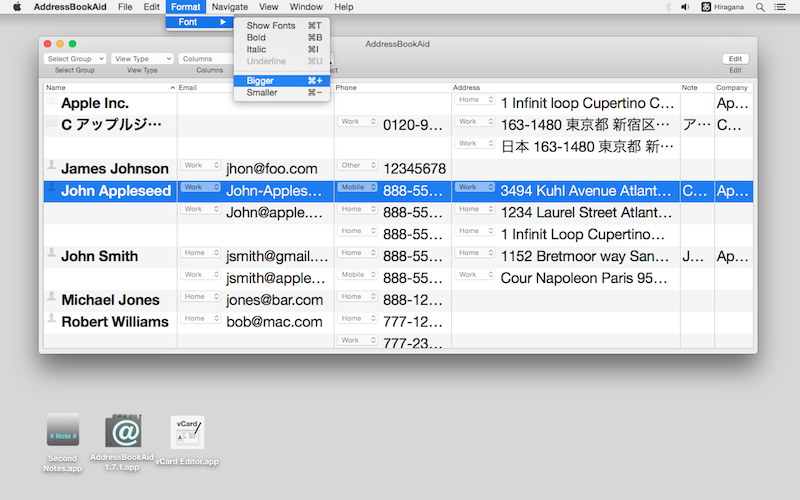
Drag and Drop vCard
You can drag and drop contacts between vCard Editor window and Apple Contact or Apple Mail.
And when Groups are visible, Drag and Drop can be used to add a member to a group.
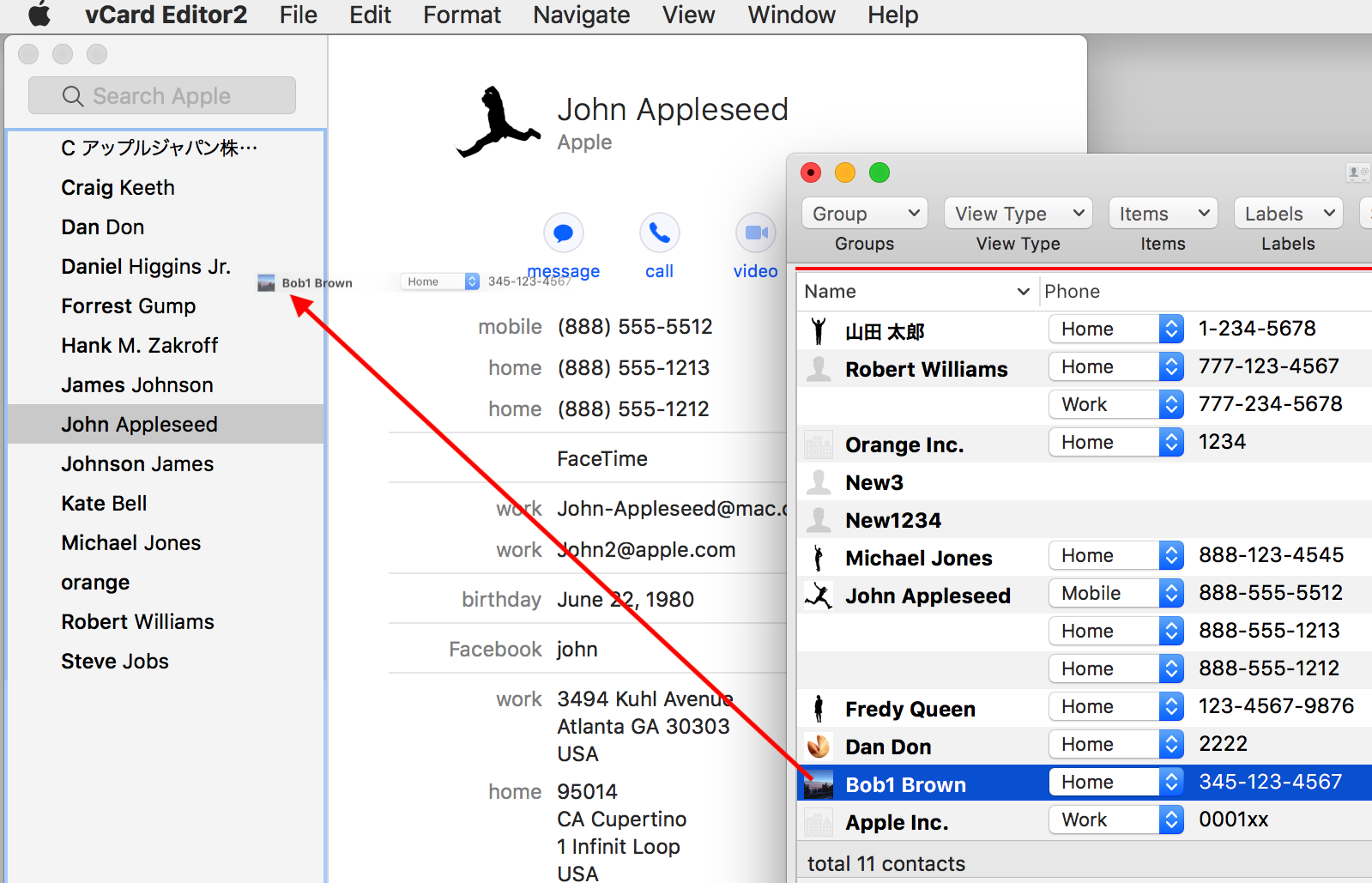


The detail of changing member of group is here.
"Copy", "Copy as CSV" and "Copy as vCard"
When you select the "Copy" in the Edit menu, the items of the selected row in the table is copied to the paste buffer in text format. The text is a collection of strings in which the values for each column and separated by tabs. You can paste it into Numbers or Excel as it is. When you select the "Copy as CSV", the strings in the text are separated by commas. And the "Copy as vCard" menu is for copying the contact of selected row as vCard format.
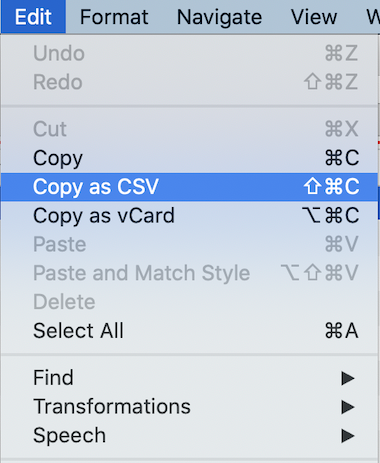
Printing
Select a contact and then select “Print” from the File menu. You can select multiple contacts by cmd-click.
When you select the "Second Contacts2" menu in the print dialog, the configuration pane will be shown for selecting a value to print.

|
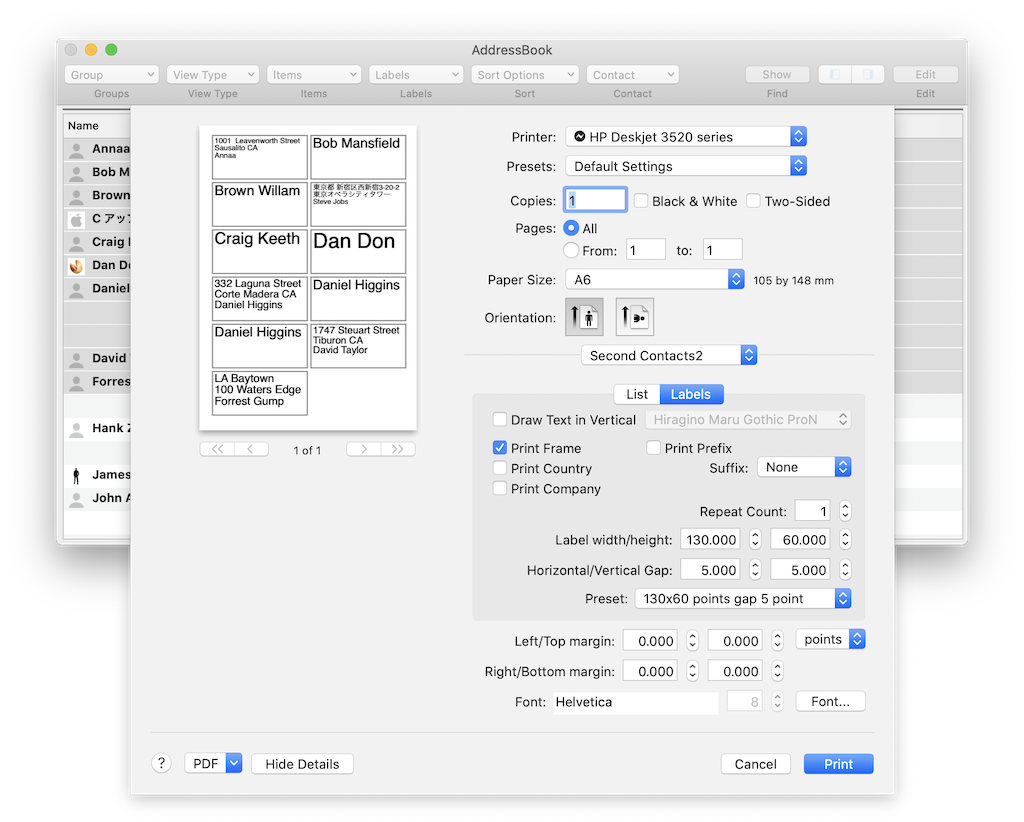
|
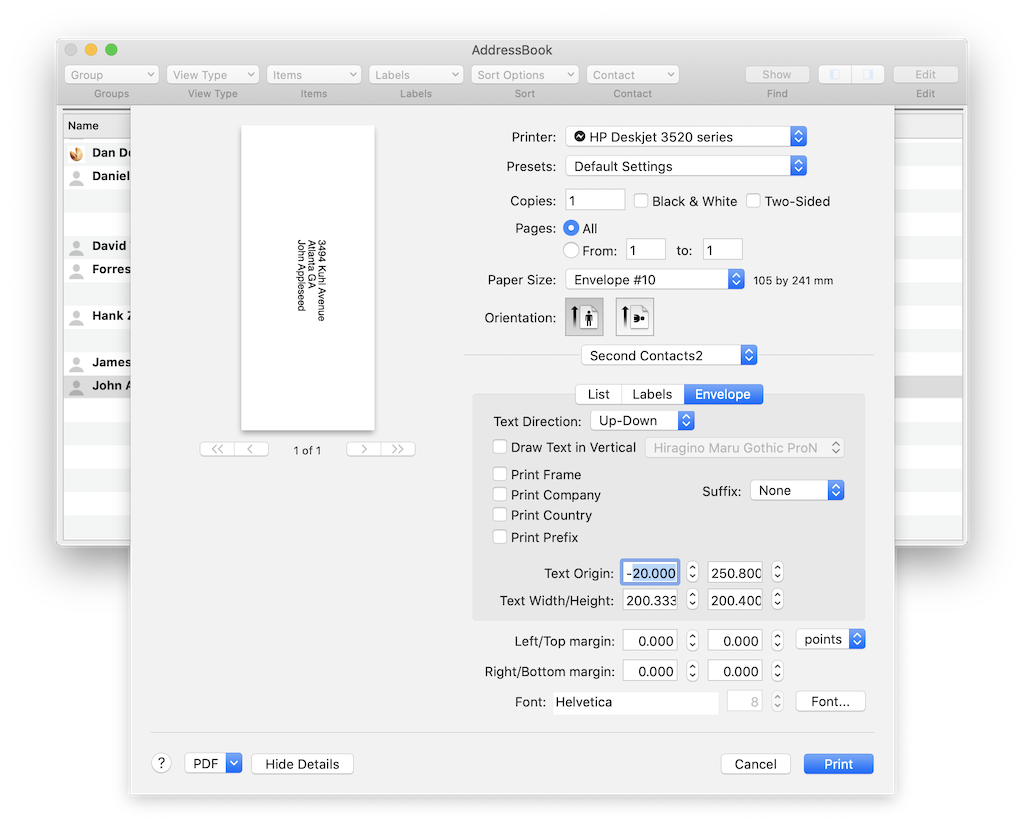
Operating system requirements:
Second Contacts2 works in macOS 10.11 and later.